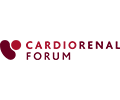April 2024 Br J Cardiol 2024;31:43–4 doi:10.5837/bjc.2024.013
Clayton Tewma, Justin Lee Mifsud
Abstract

How much does air pollution contribute to ASCVD development?
A meta-analysis showed that a low and high air pollution concentration contributes to ASCVD among adults; however, the higher the concentration, the higher the risk of irreparable damage, which can exacerbate morbidity and mortality levels.7 This meta-analysis found that heart rate variability decreased for every 10 µg/m3 increase in PM2.5 within both short- and long-term exposure groups, whereas ASCVD risk increased.
In observational studies, which took place in China, Canada, US and South Korea, the hazard ratio (HR) increased significantly in the exposure to different pollutants
|
Full text
June 2023 Br J Cardiol 2023;30:70–3 doi:10.5837/bjc.2023.017
Gustavo A Giunta, Pablo D Cutine, María F Aguiló Iztueta, Daniel Pirola, Nahuel Messina, Lorena Helman, María I Rodríguez Acuña, Ariel Kraselnik, Laura Brandani, Juan J Badimon
Abstract

Introduction
Overweight and obesity are a global pandemic.1 These evermore frequent conditions are associated with serious chronic diseases (e.g. diabetes mellitus, hyperlipidaemia, cancer), and incremented risk for cardiovascular events.2,3 Metabolic syndrome (MS), a constellation of anthropometric and metabolic anomalies, is frequently associated with an increased body mass index (BMI) and related to an adverse cardiovascular prognosis.4 Despite the well-established association between BMI and cardiovascular prognosis, the concept of healthy obesity has emerged in more recent years, resembling a phenotype of obesity without metabolic distur
|
Full text

May 2023 Br J Cardiol 2023;30(suppl 2):S4–S9 doi:10.5837/bjc.2023.s06
Chris J Packard
Abstract

Introduction
Triglycerides (TG) and cholesterol are water-insoluble molecules that are transported through the aqueous medium of plasma in large quantities from sites of absorption, synthesis or storage to tissues that require them for cell functions such as energy production. To enable transport to occur, these lipids are solubilised into plasma lipoproteins which have the general structure of a lipid-filled core and a surface of phospholipid and specific proteins. It is the proteins that direct the fate of the contained lipid by interacting with key lipolytic enzymes and cell membrane receptors. Figure 1 depicts the general structure of lip
|
Full text

May 2023 Br J Cardiol 2023;30(suppl 2):S10–S14 doi:10.5837/bjc.2023.s07
Muntaser Omari, Holli Evans, Azfar G Zaman
Abstract

Background
Sustained reduction of elevated cholesterol (particularly low-density lipoprotein cholesterol [LDL-C]) with currently available therapies is associated with reduced atherosclerotic cardiovascular (CV) events in both primary and secondary prevention.1 Nevertheless, some individuals continue to exhibit substantial residual CV risk, which is associated with higher concentrations of atherogenic cholesterol carried by circulating triglyceride (TG)-rich lipoproteins.
The failure to reduce CV events through TG reduction in statin-treated patients with niacin, fibrates and a carboxylic acid formulation of omega-3 polyunsaturated fatty acid
|
Full text
May 2019 Br J Cardiol 2019;26:52
BJC Staff
Abstract

Stat tests loaded into the VITROS XT 7600
Moderate alcohol consumption does not protect against stroke
Blood pressure and stroke risk increase steadily with increasing alcohol intake, and previous claims that one to two alcoholic drinks a day might protect against stroke are not borne out by new evidence from a genetic study involving 160,000 adults.
Studies of East Asian genes, where two common genetic variants strongly affect what people choose to drink, show that alcohol itself directly increases blood pressure and the chances of having a stroke, according to a new study published in The Lancet (doi: 10.1016/S0140-6736(18)31772-0).
Researc
|
Full text

March 2018
Fazlullah Wardak and Rosie Kalsi
Abstract

Do new diabetes drugs protect the heart and kidney?
The day’s keynote session was given by Professor Johannes Mann (Friedrich Alexander University of Erlangen, Germany). Diabetes management has been transformed with the introduction of newer agents with the promise of cardiovascular and renal protection. The sodium glucose co-transporter-2 (SGLT-2) inhibitors are known to reduce the hyperfiltration, which occurs in early diabetic nephropathy. Glucagon-like peptide 1 (GLP-1) receptor agonists are incretin mimetics, which have several benefits for diabetes management. The mechanisms by which GLP-1 agonist therapy may reduce blood pressur
|
Full text
October 2017
Chris Allen
Abstract

Atherosclerosis has long been characterised as a chronic inflammatory condition. Elevation of the non-specific inflammatory marker high sensitivity c-reactive protein (hs-CRP) is an accepted predictor of adverse cardiovascular events and its reduction in JUPITER (Justification for the Use of Statins in Prevention: an Intervention Trial Evaluating Rosuvastatin) and other statin trials has been linked with improved outcomes, even with low-density lipoprotein (LDL) cholesterol levels within the normal range.1 Although a specific aetiological link has proven harder to delineate, the cytokine interleukin 1β (IL-1β), pro-inflammatory messenger of
|
Full text

November 2016 Br J Cardiol 2016;23:136
Jaqui Walker
Abstract

The first day of the conference focused on hyperlipidaemia in children. In the opening address Professor Albert Wiegman (University of Amsterdam, The Netherlands) presented compelling data on the importance of screening and identifying children with familial hypercholesterolaemia (FH) so they can be effectively treated and early cardiovascular events prevented.
Professor Albert Wiegman (University of Amsterdam, The Netherlands)
FH is one of the most common genetic disorders in the world. Both heterozygous, and to a greater extent homozygous FH, can be disabling at a young age and shorten life expectancy. Homozygous familial hypercholesterolae
|
Full text

October 2015 Br J Cardiol 2015;22:160 doi:10.5837/bjc.2015.037
David Mantle
Abstract

(more…)
|
Full text
August 2015 Br J Cardiol 2015;22:101–4 doi:10.5837/bjc.2015.029
Kushal Pujara, Ashan Gunarathne, Anthony H Gershlick
Abstract

Introduction
Coronary heart disease (CHD) is the leading cause of death worldwide. Chronic subclinical inflammation is a key recognised process in the pathogenesis of CHD, and may play an important role in atherogenesis.
Figure 1. Atherosclerotic plaque rupture
Atherosclerosis is a complex multi-factorial disease process, which is initiated at the endothelium in response to various forms of injurious stimuli (shear stress, oxidative stress, arterial pressure changes) including inflammation. These factors appear to alter the endothelial cell’s capacity to maintain homeostasis and vascular tone and leads to the so-called endothelial ‘dysfun
|
Full text







